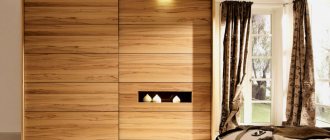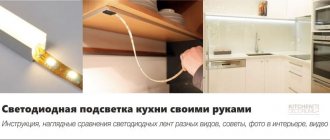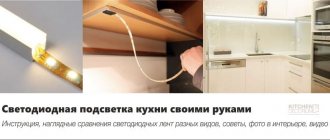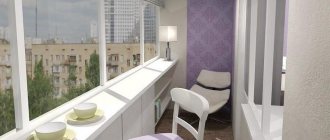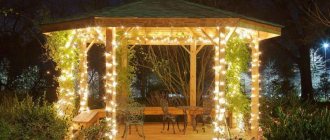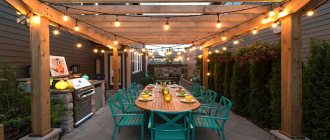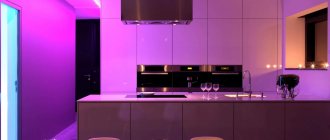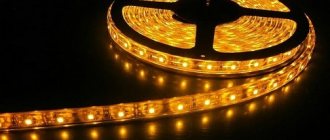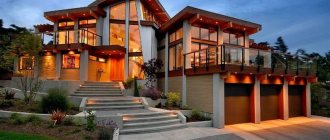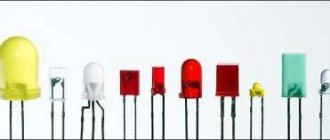Pendant lamps are used quite often in the interior. Such lighting equipment becomes an excellent assistant for the main light source. With their help, they make the lighting brighter and more solemn, and also solve the following problems:
- zoning of space;
- illumination of individual areas for reading and increasing the level of comfort;
- creating a spectacular decorative design of space.
Lamps in interiors are installed not only as additional light sources. If you correctly calculate their number, you can use such equipment without the main ceiling chandelier. It all depends on the design intent. Decorative lamps on the wall as the only lighting are most often installed in corridors. This approach helps to emphasize the sophistication of the interior design and the prestige of residential or commercial real estate.
Such use of sconces in the interior is found not only in apartments and private houses. It can be seen in hotels, cafes and restaurants, and other similar facilities. Among manufacturers' products there are a large number of small light sources of various designs. Therefore, for any modern interiors, choosing harmoniously combined lamps will not be at all difficult. Whatever style the room is decorated in, you will be able to find light sources of the appropriate design.
Purpose and advantages of lamps
Wall lamps solve different problems in interiors. If previously they were more often used only in certain places, today the decorative function is taking on one of the leading positions. For example, until relatively recently, such light sources were traditionally placed near a bed, sofa, armchair, i.e., a place for reading, knitting, or other hobbies. Today, when purchasing a central chandelier, sconces of the same design are often purchased. They are intended largely for decorating interiors, as well as providing the ability to create soft, dim lighting when bright light is not necessary.
The undeniable advantages that characterize the lamps include the following:
- exquisite design that decorates the space,
- the ability to illuminate a certain area of the room and save energy,
- low power consumption.
The cost of such lighting equipment varies depending on the design, materials used in the manufacture, type of lamps, and the celebrity brand of the manufacturer. Today it is possible to install a lamp in a modern space at different purchase costs. Even inexpensive equipment can be found in an interesting design, so that it illuminates not only a certain area in the space, but also becomes one of its bright decorations.
Corridor
The overhead light makes the already tiny space even smaller. Wall lamps installed at head level help get rid of this effect.
- New Year's decor - the best ideas for 2022 and tips for decorating rooms and bedrooms of various sizes (150 photos)
Thread curtains - we make stylish and original decorations for your home or apartment (95 photos)
Baskets made of wicker: the best ideas and subtleties of using wicker decorations in design (100 photos)
The flow of light will be reflected from the ceiling and shiny furniture, visually enlarging the space.
Types of lamps
You can find lamps in interiors of a wide variety of types, including:
- point,
- LED,
- designed for placement on the wall.
Ceiling lamps in interiors simultaneously solve many problems. It is important at the stage of planning renovations and creating a design project to decide where and how much lighting equipment should be. This is necessary in order to correctly route the wiring and avoid unnecessary wires in the interior in the future.
Using different types of lamps, it will be possible to realize the most daring design ideas in each specific room, create an interior solution that will be extraordinary and provide the most comfortable conditions for property owners or their guests.
Built-in lamps in interiors successfully zone space. Today you can combine kitchens and dining rooms and create separate zones in different rooms. You can delimit space in different ways, not the least of which are light sources. This technique is often used by professional designers who like to find non-standard and extraordinary solutions.
Objectives of decorative lighting
Decorative lighting does not replace the main one - it becomes a stunning addition. The main goal of designers is to make the design of rooms more expressive.
It is important not to overdo it when implementing ideas. You should immediately decide what is best to highlight with light: walls, decorative elements or furniture.
You can combine different lighting effects in one room. Dynamics, color, shimmer - winning solutions for creating a unique interior.
Beautiful lighting in the room
What should you consider before purchasing lamps?
If you want to place sconces in corridors on the wall or in rooms, you should first think through everything carefully. As a rule, such thoughts come when renovations are planned in an apartment or private house, during which the wiring can be replaced or another branch can be made from the distribution box.
Initially, a style concept is chosen to decorate a specific space or the entire property. Next, the design is developed and locations for lighting equipment are planned. At the next stage, it’s time to move on to studying the variety of products from modern manufacturers. This can be done in different ways, using the Internet or visiting themed stores. Before choosing certain models, it is important to focus on the style of the space so that the light sources fit organically into the future decor. When choosing, it is important to consider not only the design, but also the luminous flux that a particular lamp provides. This will help create the desired level of lighting in the room.
Backlighting using laminate
The implementation of this original and inexpensive method of illumination is carried out using the following tools and materials:
- wooden planks;
- laminate;
- light pipes;
- screwdriver (screwdriver);
- building level;
- wood saw;
- screws;
- self-tapping screws;
- adhesive tape;
- assembly adhesive.
Installation work is carried out in the following order:
- Make a drawing on the wall of the location of the light pipes. They must be positioned in such a way that the communications are not visible when the work is completed. Only the pipes themselves should remain noticeable. It is recommended to draw lines approximately at eye level.
- Arrange the electrical wiring in accordance with the diagram. Lay the wire, securing it with holders (screw connectors).
- When laying the cable, you must not make a mistake with its length. The cable must be sufficient to reach the power source.
- Install light bulbs.
- Cut planks from wood and install them on the wall. Glue the boards to the slats. Do this work from the bottom, gradually moving upward. Perform the installation gradually. If you rush, the upper boards will put pressure on the lower ones and the structure will deform. To secure the boards more securely, use screws, self-tapping screws or tape.
- Connect power and test the system.
How to install correctly?
After selecting a specific fixture, once the renovation is complete, it’s time to move on to installation. The choice of installation method is influenced by the type of lighting equipment, as well as the manufacturer’s recommendations. Therefore, in the interiors, opportunities are created in advance at the stage of repair work, allowing for easy and quick installation in the future, spending a minimum of time.
If you follow the recommendations of lighting equipment manufacturers, you will be able to do everything correctly. For those who have not previously encountered such work, it is preferable to invite a professional electrician. This is necessary not only for safety, but also for the long service life of each lamp. Electrics requires a certain level of knowledge and experience, which allows not only to correctly plan the wiring, but also to make it durable, and to provide automatic circuit breakers in case of emergency situations.
Choice for a specific room
For the interiors of all rooms, if desired, it will be easy to select light sources of the appropriate type. It has long been customary to decorate a wide variety of rooms with lamps. If you think through everything correctly, you will be able to combine aesthetics and practicality in one space.
First of all, when choosing, you should focus on the design of the room, in second place - the type of equipment provided, in third place - the desired intensity of the luminous flux. If we talk about the living room, then it is important to choose sophisticated and stylish appliances for this room, since it is central in every home and should look as elegant as possible. When choosing a pendant lamp or other type of light source, you will also need to focus on its size to ensure an organic space.
For bedrooms, you will need to provide light sources at the head of the bed, as well as at the makeup table. In the bathroom, such equipment is installed near the mirror to make it easy and simple to clean yourself up and achieve an ideal appearance.
For a hallway, the choice of lamp depends on whether it has overhead lighting. If you decide to use only additional lighting equipment, its total power should be enough to make the room comfortable to be in.
In kitchens, lamps are installed in the dining table area. Light sources are also used in other places where it is necessary to provide high-quality lighting. The children's room follows the principle of a bedroom for adults, and additional lighting equipment can be installed near the desk so that the child does not damage his vision.
Kitchen
It is recommended to divide the workroom into zones, including with the help of lighting.
By installing LED lights on the wall near the stove or kitchen table, you will get additional lighting and decorate the kitchen.
It is better to use closed sconces to avoid contamination from dust or oil splashes.
In most homes, the dining table is illuminated by an overhead chandelier. If you place the table against the wall, you can install two or three sconces on it and create more interesting lighting.
Style Guide
Manufacturers produce a significant number of different types of equipment for interiors decorated in various styles. For classics and modern, elaborate devices are suitable, the design of which includes crystal elements, as well as other decorations.
The stricter the styles, the more laconic the light sources. For high-tech there is appropriate equipment, for a loft it is different in style, close to industrial. You can independently study the features of styles or contact a professional designer who is well acquainted with the products of different manufacturers and can recommend lighting fixtures that will be perfect for a specific interior design.
Installation Tips
The choice in favor of a certain type of lighting equipment depends on the design of the room and its size. The inclusion of light sources should provide the proper level of illumination at night. If there are no windows in the space, such as in a hallway, it is important to provide lighting equipment in all places where it is especially necessary. This should be done near the closet, in the place for putting on shoes, directly at the entrance.
If there are a large number of lighting fixtures in the room, it is useful to make the wiring in such a way that it is possible to turn them on individually or in groups. This will create conditions for saving energy, since it is not always necessary to illuminate the entire room. The more time you spend thinking through the lighting system, the more comfortable it will be.
Hallway
In the hall or hallway, wall lights are part of the functional lighting. Since these rooms most often do not have windows, sconces support and complement the main ceiling lighting or replace it completely.
The devices are located around the perimeter of the hallway at a height of 2 meters from the floor. If the ceilings are low, the lamps can be hung 15-20 cm lower. With this placement, the lighting system will fully perform its assigned functions and will not interfere with the movement of furniture, household appliances and other large items through the passage room.
If the walls of the hall are decorated with paintings, it is better to install wall light sources slightly higher than the frames; usually in such cases we are talking about a height of 210-230 cm from the floor. To illuminate the mirror, paired lamps are placed on both sides at a height of 180-190 cm from the floor.
